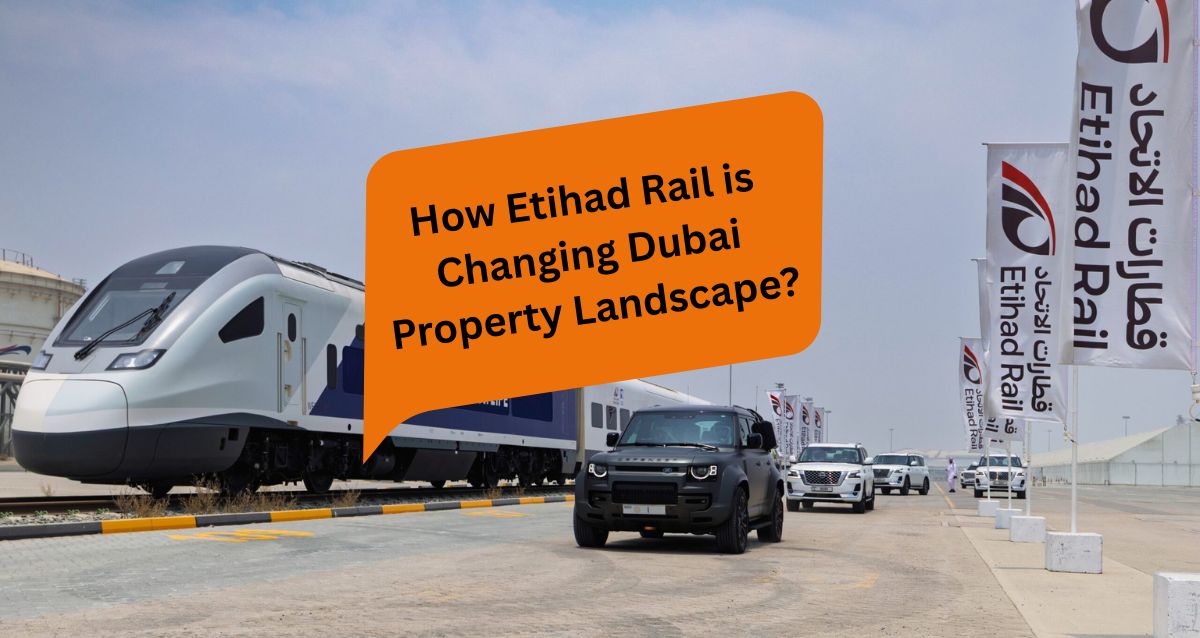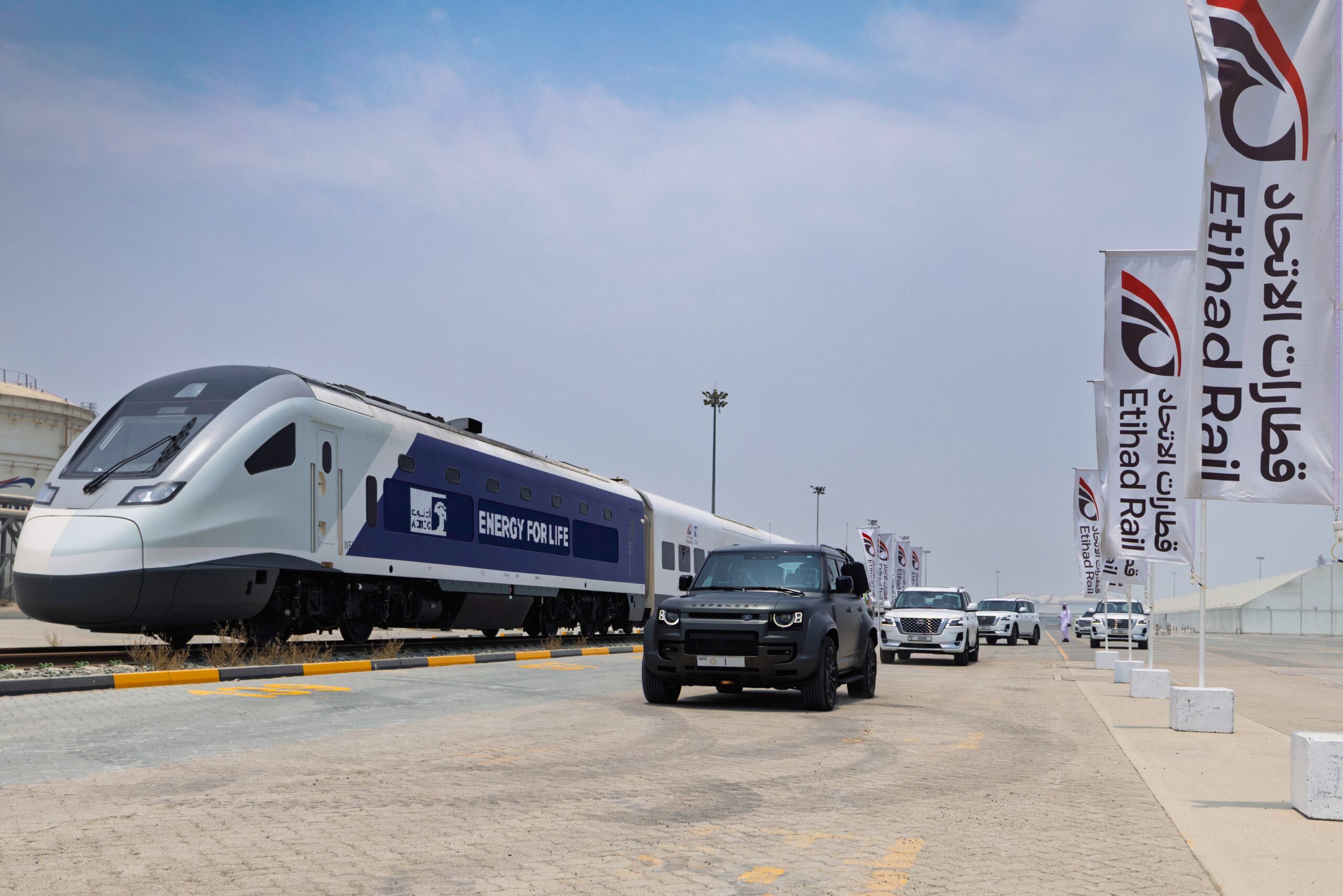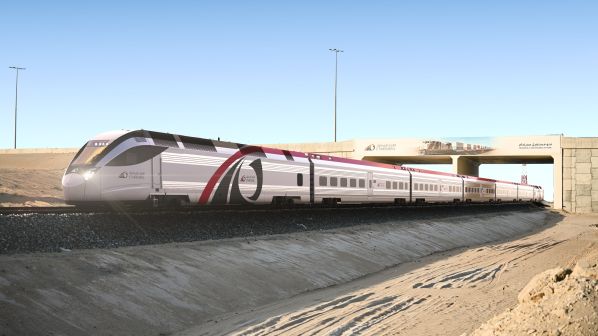How Etihad Rail is Changing Dubai Property Landscape?

Dubai's Property Landscape: The Etihad Rail Shift
When Dubai undertakes an infrastructure project, it rarely does so quietly. From the ambitious Dubai Metro to the expansive Sheikh Zayed Road upgrades, the city has a proven track record of turning transportation projects into catalysts for property value growth. Now, the UAE’s Etihad Rail project is set to be the next game-changer in the real estate market - and early signs indicate it could have an even bigger impact than its predecessors.
With construction well underway and passenger services expected to launch in 2026, Etihad Rail is already influencing investor behaviour and property trends, particularly in Dubai South and other areas along its route. According to market reports, property values in prime locations near upcoming stations could rise by up to 25%, while rents may increase by as much as 15% in the coming years.
A Growing Network With Big Ambitions
The Etihad Rail project is no small feat. Stretching approximately 900 kilometres across the UAE, the network will connect 11 cities and regions across all seven emirates. Once fully operational, it is projected to handle 36.5 million passengers annually by 2030, linking urban centres, industrial hubs, and residential communities with unprecedented speed and convenience.
While much of the network’s early development has focused on freight transport, the passenger service is now the centrepiece of the next phase. The goal? To reduce travel time between emirates, ease congestion on major highways, and create a truly connected UAE where movement between cities is seamless.
This is not just about mobility; it’s about reshaping economic patterns, business locations, and - perhaps most importantly - real estate demand.
What History Tells Us About Infrastructure-Driven Growth
Dubai has seen this pattern before. When the Dubai Metro was launched, property values in neighborhoods along its route saw a surge. The convenience factor alone drove higher demand from both buyers and tenants, and rents in those areas rose accordingly.
Similarly, upgrades to Sheikh Zayed Road and other major arterial routes have historically pushed up land and property prices nearby. Infrastructure creates accessibility, and accessibility creates value - it’s a cycle that real estate investors understand well.
Etihad Rail is expected to trigger a similar wave, but with a wider geographical impact, since it links multiple emirates rather than serving only Dubai. This means investors aren’t just looking at one city’s growth; they’re eyeing a national network effect.

Early Signs of Appreciation
Even before the first passenger boards an Etihad Rail train, the numbers are moving. According to data referenced in Khaleej Times, property values in some connected areas have already increased by an average of 9% over the past nine months.
In Dubai South, where a station is planned, prices are showing upward momentum. This area in particular stands out for its potential, not only because of the rail connection but also due to its strategic location near Al Maktoum International Airport and the Expo City Dubai site. Both developments are part of Dubai’s long-term vision to create a second major urban hub in the south of the emirate.
Elsewhere, in neighbourhoods near Dubai Metro expansions, rents have already risen by up to 23%, demonstrating that transport upgrades translate almost immediately into rental yield growth.
Dubai South: The Star of the South
If there’s one location poised to be a big winner from the Etihad Rail network, it’s Dubai South.
- Once seen as a long-term development zone, Dubai South is now firmly on the radar of investors and homebuyers. The area benefits from:
- Proximity to Al Maktoum International Airport is set to become the largest airport in the world.
- Direct access to Expo City Dubai, a global innovation and sustainability hub.
- Planned Etihad Rail station linking it to the rest of the UAE with fast, convenient transport.
- Affordable entry prices compared to central Dubai, offering high growth potential.
The combination of air, road, and soon rail connectivity positions Dubai South as a multimodal transport hub, making it attractive for businesses, logistics firms, and residents who value accessibility. As more companies set up operations there, the demand for housing - both rental and owner-occupied - is expected to rise sharply.
For investors, this creates a rare opportunity: entering a market before the full impact of infrastructure is priced in.
Investor Behaviour: Moving Early
Savvy investors know that the time to buy is before a major infrastructure project is completed. That’s why both local and international buyers are already targeting properties near planned Etihad Rail stations. The
Logic is simple:
Demand Surge Post-Completion - Once the rail is operational, more people will want to live near stations for convenience, driving up prices. Limited Supply Near Stations - Prime plots and properties closest to transport hubs are finite, increasing competition.
Rental Yield Growth - Tenants are willing to pay more for accessibility, especially in areas where commuting time is reduced significantly.
Given these factors, areas like Dubai South, Jebel Ali, and locations near the Abu Dhabi-Dubai rail link are seeing increased transaction activity.
Beyond Dubai: A Nationwide Impact
While Dubai’s property market will see significant benefits, Etihad Rail’s influence won’t stop at the emirate’s borders. By linking Abu Dhabi, Sharjah, Ras Al Khaimah, and Fujairah to Dubai with high-speed passenger service, the project opens up entirely new real estate opportunities in secondary cities.
Imagine living in Fujairah but working in Dubai, with a commute that’s faster than many current road journeys within the city. This kind of inter-emirate connectivity could lead to:
- Rising demand in more affordable emirates as residents take advantage of lower property prices without sacrificing accessibility to Dubai.
- Development of new residential and commercial hubs along the rail route.
- Increased tourism-driven rentals, as visitors explore more parts of the UAE.
A Catalyst for New Development
Perhaps one of the most exciting aspects of Etihad Rail is its potential to unlock underutilised areas. Land that was previously considered too remote or inconvenient could become prime real estate once it’s just a short train ride from a major city.
Developers are already factoring this into their plans. Expect to see:
- New residential communities are designed with rail connectivity in mind.
- Mixed-use developments combining housing, retail, and office space near stations.
- Hospitality projects catering to increased passenger flows.
For Dubai South, this could mean a wave of new apartment complexes, townhouses, and even luxury villas as demand grows.
Challenges and Considerations for Investors
While the outlook is overwhelmingly positive, investors should still approach it with a strategy. Factors to consider include:
- Timeline for completion – While 2026 is the target for passenger service, construction schedules can shift.
- Exact station locations – Properties closest to station entrances will see the strongest appreciation.
- Type of property – Not all asset classes will benefit equally; residential near stations may outperform commercial in some areas.
That said, history strongly suggests that early movers near major infrastructure projects consistently outperform the broader market.
Conclusion: A Turning Point for Dubai Real Estate
The Etihad Rail project is more than just a transportation upgrade; it’s a nationwide economic catalyst. For Dubai, and especially for Dubai South, it represents a chance to redefine growth patterns and create new investment hotspots.
As connectivity improves, the city’s property market is likely to see a wave of appreciation similar to - if not greater than - what followed the Dubai Metro launch.
For investors, the message is clear: the train hasn’t left the station yet, but the time to get on board is now. Those who secure properties near upcoming stations today are positioning themselves for strong capital growth, rising rental yields, and a front-row seat to one of the UAE’s most transformative infrastructure projects.
To learn more about how Etihad Rail is changing the Dubai property Landscape, book a free consultation with one of the Signature Habitat team advisors.
This article was published on 18-08-2025. The information provided in the article is based on the policies and rules applicable at the time of writing it. Talk to one of our consultants for any recent updates or changes.
